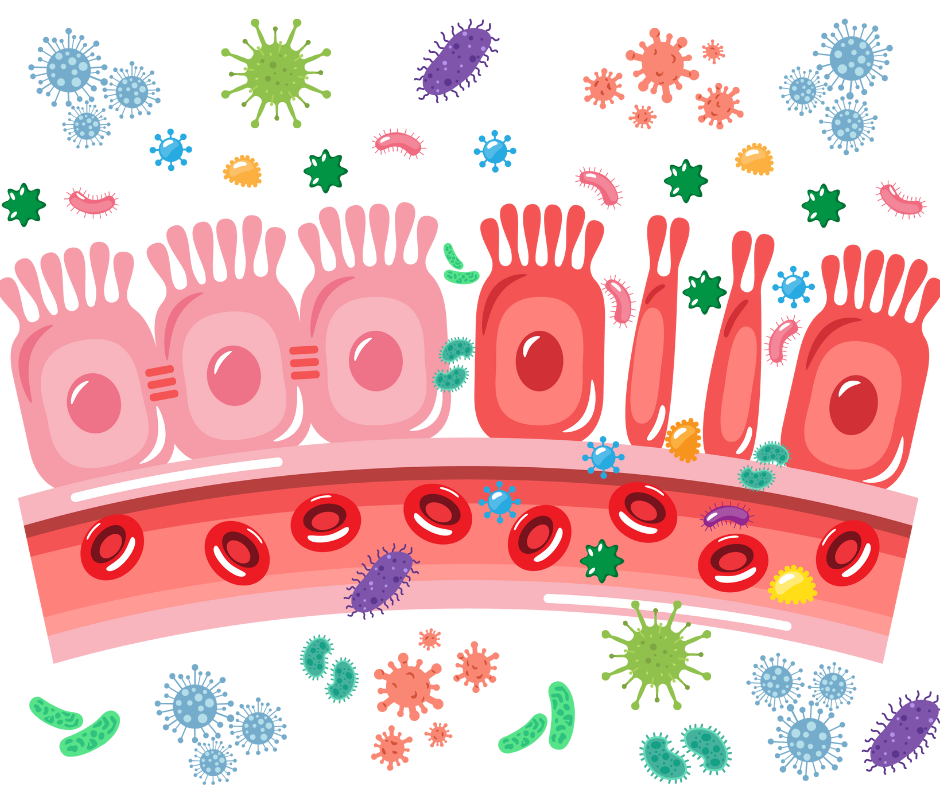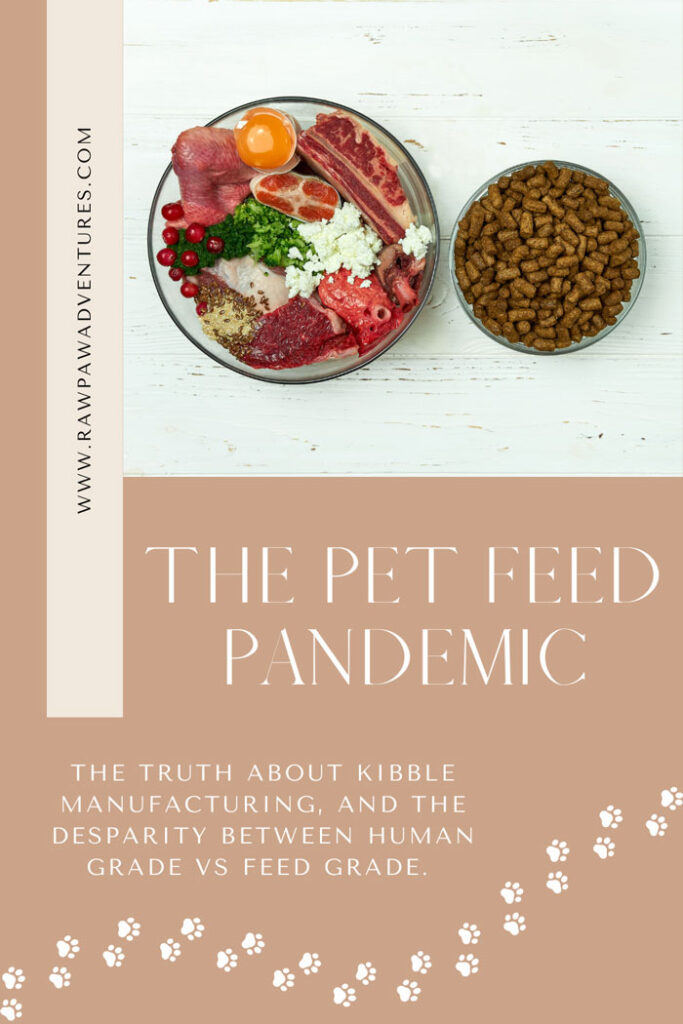
Have you ever watched your pet itch, lick or bite themselves and wonder- are they just scratching an itch, or is it something more insidious? Not all reactions (be they to food or environmental triggers) are created equal — and knowing the difference is key to resolution rather than just symptom suppression. Let’s get sciency and dissect the differences between allergies, sensitivities and intolerances.
Defining & Decoding
🔴 Allergy (IgE-mediated hypersensitivity reaction)
- A true immune system overreaction that can happen quickly — often within minutes to hours.
- Involves IgE antibodies, which trigger histamine release (think: itching, swelling, hives, sneezing, respiratory distress).
- These are your classic “allergic reactions,” which can range from annoying (itching/hives) to severe (wheezing) or even life-threatening (anaphylaxis). We generally don’t see this with foods in our pets, however environmental/inhaled allergens (dust, pollen, mold spores, etc) are common.
🧪 IgE = Explosive & Excessive
🔶 Sensitivity (IgG or IgA-mediated delayed hypersensitivity)
- A delayed immune response, often showing up hours to days after exposure (sometimes as much as 72 hours).
- Involves IgG or IgA antibodies, which can trigger low-grade, chronic inflammation.
- Symptoms are sneaky — like itchy ears, recurring hot spots, gut issues, or behavior changes. Many pets suffer for years before we connect the dots, and this can be connected to both food and environmental triggers. This is what I see day after day with my clients!
🧪 IgG = Gradual & Gut-driven
If you’re a visual learner like me, you may enjoy a nice chart in order to do a side-by-side comparison. Here is a chart comparing IgE, IgG and IgA to help put it in perspective:
| – | IgE | IgG | IgA |
|---|---|---|---|
| Full Name | Immunoglobulin E | Immunoglobulin G | Immunoglobulin A |
| Main Role | Triggers allergic reactions; defends against parasites | Long-term immunity to tissues; fights bacteria, viruses, and toxins | Protects mucous membranes (gut, lungs, eyes, nose) |
| Mechanism of action | Attaches to mast cells & activates histamine release | Remember past infections and neutralize them quickly | Act as a “bouncer” at entry points, blocking pathogens |
| Where It’s Found | Blood, tissues near skin, lungs, and mucosal surfaces | Blood and extracellular fluid (all over the body), crosses placenta | Mucous membranes (gut lining, respiratory tract, saliva, tears) |
| Timing | Immediate (minutes to hours), half-life of ~2 days, memory ranges from years to lifelong | Slower (hours to days), half-life of ~23 days, memory ranges from months to years | Ongoing (constantly guards mucosal surfaces) |
| Signs When Imbalanced | Anaphylaxis, asthma, eczema, hives, GI distress, tachycardia | Gi issues, itchy ears, recurring hot spots, behavior changes | Recurrent infections (gut, respiratory, urinary tract), leaky gut signs |
🟡 Intolerance (Non-immunologic reaction)
- I want to give intolerances an honorable mention here, because they do plague many pets. This is not an immune reaction, but more of a digestive or metabolic issue — often due to enzyme deficiencies or trouble breaking down certain compounds, sometimes due to genetic variants.
- Common triggers: lactose, FODMAPs, gluten, histamines, salicylates, lectins, pesticides, or additives like MSG or flavorings.
- Symptoms often show up as digestive distress (gas, bloating, diarrhea) or behavioral shifts after eating.
🧬 Intolerance = Intrinsic (comes from an issue inside)
How Does It All Work?
As per usual I have an infuriating answer- it depends! When it comes to allergies and sensitivities, it’s an immune imbalance or hypersensitivity response. When it comes to intolerances, it’s usually from underlying inflammation, an enzyme deficiency, and even SNPs (single nucleotide polymorphisms, essentially a genetic mutation) rather than an immune problem. Since I want the purpose of this article to be mostly about the role of the immune system, we’re going to focus on only allergies and sensitivities today, so let’s compare those two.
When the immune system becomes hypersensitive, something very interesting happens that starts out as a protective measure but can end in catastrophe. To understand the change, let’s first understand the baseline. We all have two ‘types’ of immune systems within us- the innate immune system, and the adaptive immune system. Since you now know I love them, here’s a comparison in chart form:
| – | Innate Immune System | Adaptive Immune System |
|---|
| Response Speed | Immediate (minutes to hours) | Delayed (days to weeks) |
| Specificity | Non-specific (responds the same way to all threats) | Highly specific (targets a particular pathogen or allergen) |
| Purpose | First line of defense, fast and broad protection | Precise attack on specific invaders, long-term immunity |
| Memory | No memory (responds the same way every time) | Has memory (responds faster and stronger to each exposure) |
| Main Players | Skin, mucous membranes, white blood cells (neutrophils, macrophages, NK cells) | T-cells, B-cells, immunoglobulins /antibodies (IgE, IgG, IgA, etc) |
Alright, now you know that there are two main immune systems. So, in summary…
- Innate immune system= airport security. They check everyone at the gate and sound the alarm when anything looks suspicious as the ‘first responders’ for threats to our health. The immediate response created is nonspecific and uses inflammation to almost blindly attack and remove a foreign invader or threat. It also doesn’t remember that threat once it’s gone, like Drew Barrymore in 50 First Dates!
- Adaptive immune system= the FBI. They build detailed files on each invader and send highly trained special forces (t & B-cells, antibodies, etc.) to eliminate specific threats with precision. The more often it’s exposed to the same threat, the bigger the response becomes and the more obvious the symptoms exhibited due to that response.
The one we want to focus on here is the adaptive immune system, since this is the one that goes haywire and can lead to the development of allergies and sensitivities. There are two arms to the adaptive immune system, and those are either cell-mediated (Th1) immunity or humoral/antibody-mediated (Th2) immunity. For ease and to prevent a ton of extra typing, I’ll use just Th1 and Th2 going forward. And, as I’m sure you suspected, here’s another lovely chart for comparison:
| – | Th1 Response | Th2 Response |
|---|
| Type of Immunity | Cell-mediated | Humoral (antibody-mediated) |
| Main Role | Fights intracellular invaders (viruses, some bacteria, cancer cells) | Fights extracellular invaders (parasites, toxins, allergens) |
| Primary Defense Mechanism | Destroys infected cells and pathogens hiding inside cells | Produces antibodies (especially IgE) to neutralize threats outside cells |
| Key Immune Cells | Macrophages, cytotoxic T-cells, natural killer (NK) cells | B-cells, mast cells, eosinophils, immunoglobulins (Ig) |
| In Allergies/Sensitivities | Often underactive in allergic pets | Often overactive, driving allergic reactions and hypersensitivity |
| When Imbalanced/Dominant | Increased risk of chronic infections, cancer | Increased risk of allergies, asthma, atopic dermatitis, autoimmune issues |
| Common Symptoms | Chronic infections, autoimmune diseases (IBD, IMHA, thyroiditis), poor vaccine responses, poor wound healing, chronic diarrhea, depression, low energy. | Allergies & sensitivities, asthma, atopic dermatitis, vaccine hypersensitivity, recurrent infections, chronic itching, anxiety & reactivity. |
| Typical Lab Findings | Low antibody levels, high inflammatory markers | High IgE & IgG antibodies, eosinophilia |
Hopefully I’m not getting too deep into the weeds with all this, but I do think it’s helpful to know the difference and be able to see if your furry family member checks a lot of these boxes. And remember, you can swing back and forth between Th1 and Th2 dominance depending on stress, toxins and other factors.
The final very important question to be asking here is- why would the immune response be getting imbalanced or be overstimulated in the first place? What is the actual cause, the driving force that leads the immune system to act this way? And I think you may already know the answer to that….
What is the Root Cause?

Gut! Gut! Gut! Gut! Come on now, I’m sure you had a gut feeling that this would be the answer- poor gut health is one of the top drivers of immune dysfunction! Leaky gut (and its many contributors) is something that Functional Medicine practitioners have been talking about for decades- so why hasn’t the knowledge become more widely known? Unfortunately, the answer is to follow the money.
Ultra-processed kibble, which is loaded with poor quality denatured animal proteins, oxidized fats, and grains & starches that are heavily sprayed with glyphosate, is known to be a direct contributor to increased intestinal permeability (leaky gut). The kibble industry is a multi-billion dollar per year monopoly, and the sad truth is that mass marketing and near-brainwashing from kibble companies have led modern society to believe that real food is bad for our pets, and that kibble is king. This bleeds into our veterinary schools who are partially funded by the same companies who own the majority of kibble brands on the market, and who include textbooks and nutrition education from the Mark Morris Institute. Mark Morris is the founder of Hills Science Diet. If that isn’t a conflict of interest, I don’t know what is.
“Gut health isn’t a trend — it’s a necessary pillar for curating long-term vitality.”
-Kara Hanrahan (Raw Paw Adventures)
Other potential contributors to leaky gut include genetic variations, medications, toxins, nutrient deficiencies, hypochlorhydria (low stomach acid), stress, pesticides, dysbiosis and more. It can really help to work with a holistic pet professional to get to the root cause of your pet’s allergies, sensitivities or intolerances since each pet need to be approaches as an individual with a care plan that works best for them and YOU. To learn more about the importance of good gut health, hop over to my article Why Health Starts With the Gut (Microbiome).
Once we suspect that there is an allergy or sensitivity occurring, how can we approach getting a more definitive answer? Luckily, there are some testing options, both at home and in an office setting, that can act as a guide for your next steps.
Testing Options
Here’s a breakdown of a few different testing methods, each with its own vibe and value.
1. 🧪 Pet Intolerance Test by Glacier Peak Holistics
- Method: Biofeedback and bioresonance using hair and saliva samples
- Scope: 395 food and environmental items
- Turnaround: ~2 weeks
- Sample Type: Hair and saliva
- Price: ~$130
Pros:
- Includes environmental factors
- Non-invasive, easy at-home collection
- Offers insight into potential energetic imbalances
Cons:
- Not conventionally validated in scientific literature
- Measures imbalances, not immune responses
2. 📊 NutriScan by Dr. Jean Dodds
- Method: Saliva antibody test (IgA and IgM)
- Scope: 112 food ingredients
- Turnaround: 2–3 weeks
- Sample Type: Saliva
- Price: ~$298
Pros:
- Scientifically validated although the data on IgM is less robust than others
- Non-invasive, easy at-home collection
- Run by a holistic veterinarian
Cons:
- More expensive
- Does not test for environmental triggers
Comparison Chart
Come on, you knew it was coming 😉
| Glacier Peak Holistics | NutriScan by Dr. Dodds | |
|---|---|---|
| Method | Bioresonance | Saliva Antibody (IgA, IgM) |
| Sample Type | Hair & Saliva | Saliva |
| Items Tested | 300+ | 112 |
| Environmental Tested? | Yes | No |
| Scientific Validation | No | Yes |
| Turnaround Time | ~2 weeks | 2–3 weeks |
| Price | ~$130 | ~$298 |
3. 🧪 In Office Testing
There are other testing options including skin scrape, skin prick, blood testing, and component protein testing, however most of these are not readily available or need to be done through a dermatology specialist. Also, these tend to be the most expensive as they require hands-on office visits.
4. Elimination Diet
Of all the methods, an elimination diet is the only one that’s going to give you real-time results visualized with your own eyes (and possibly nose if we experience GI upset). This method is best applied with the assistance of a holistic pet professional; however I do want to point out that an elimination diet doesn’t mean simply eliminating every trigger identified on a sensitivity test and never feeding it again. It’s much more nuanced than that and includes adding back foods or trying new foods one at a time and watching for reactions.
The Limitations
Unfortunately, neither 1 or 2 are 100% effective at identifying a trigger, nor can they tell you what the severity of a reaction would be even if a trigger is identified. Number 3 is more accurate but can still be failable, and also cannot predict with absolute certaintly what the level of reaction will be. The only way to do that is an elimination diet, which is my recommended way to truly determine a problem food.
However, while an elimination diet is best for determining food triggers, it obviously will not identify environmental triggers. Options number 1 or 3 would be needed for that. Of course, you can assess how your pet reacts during seasonal changes but that comes with the risk of confusing an environmental trigger with a food one if anything else in the regimen is introduced around the same time. Additionally, performing a true elimination diet trial takes a long time and requires strict methods and monitoring. So, as we can see, no method is 100% perfect or one-size-fits-all.
With a Test Flaring Red, What Lies Ahead?

Remember — while these tests can offer guidance, it’s also important to recognize that food sensitivities don’t develop in a vacuum. They’re a symptom of a deeper imbalance — like leaky gut, poor diet, chronic inflammation, microbiome disruption, or environmental toxin overload. If these root causes aren’t addressed, your dog or cat can continue developing new sensitivities over time, making their journey back to wellness even more frustrating. Getting hung up on test results and thinking all you need to do is avoid the words in red won’t fix the problem- lasting results come from a species appropriate diet, detox, and supporting the root cause of imbalance. You know, all that holistic goodness that I deal with on a daily basis!
“You can eliminate food triggers all day long, but if the gut isn’t healthy, new ones will keep popping up until there are no options left to feed.”
-Kara Hanrahan (Raw Paw Adventures)
My best recommendation is to work with a pet professional. They can help guide you in terms of which testing methods (if any) are right for your fur baby, how to interpret them, and which steps to take next based on the results, because results can shift as the body heals. A pet professional can also help structure an elimination diet for you and guide you through the (often long) process.
Lastly, we need to always listen to the pet in front of us — what their body is telling us, how they respond to food and seasonal triggers in real time, and how they thrive (or don’t) on what we give them. Health is dynamic, just like our pets. Let the data inform you but let your fur baby lead the way. 🐾
Be sure to check for Allergies vs Sensitivities Part 2- A Holistic Approach to Management!


